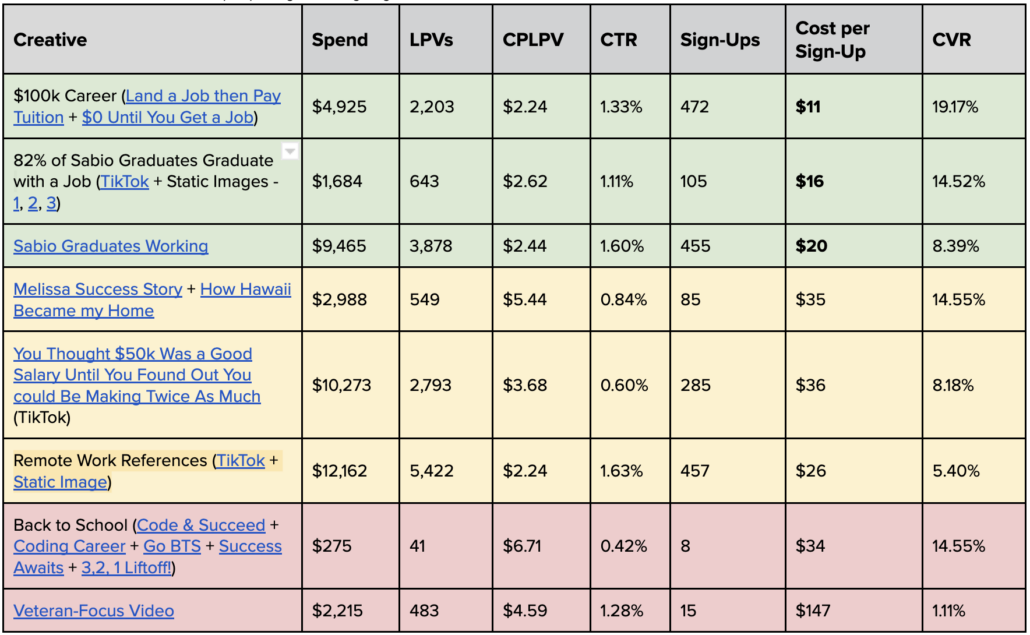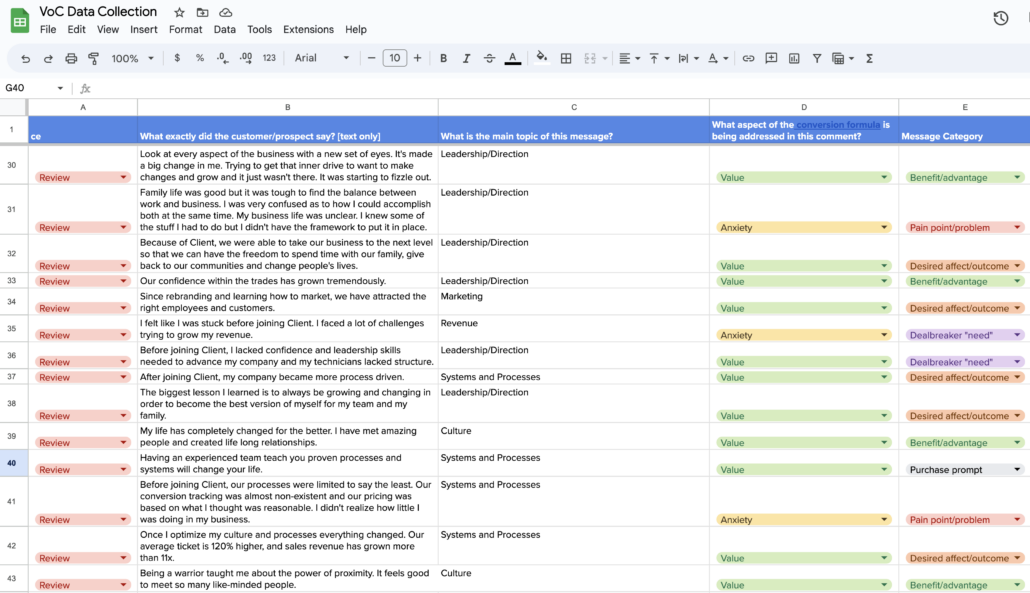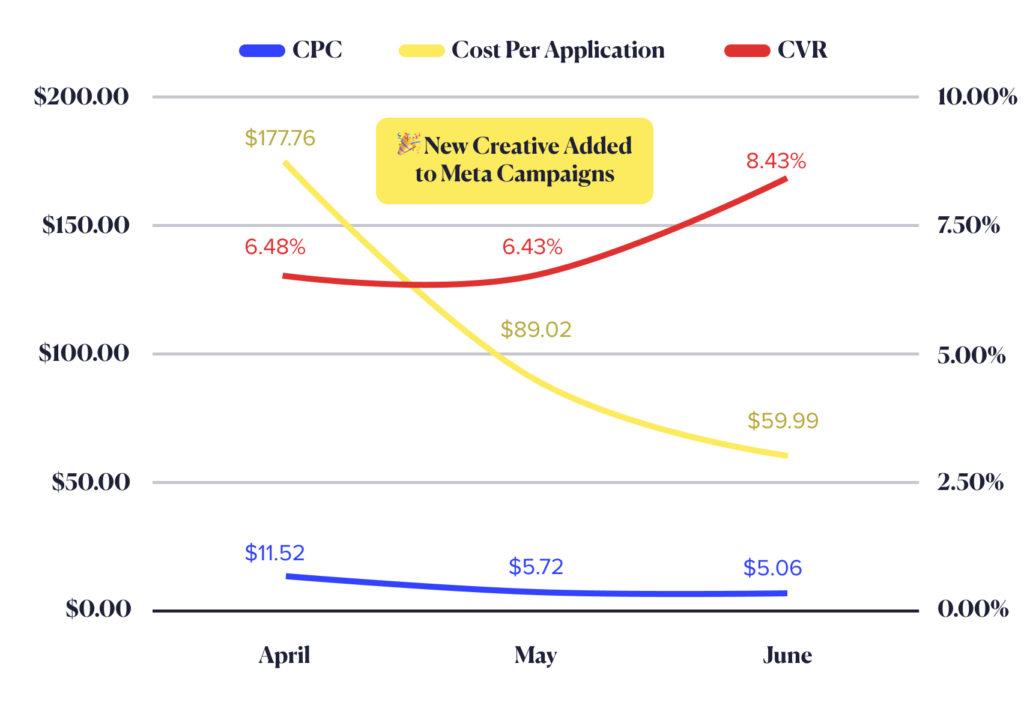Performance Ad Creative: Personalized Connection at Scale
Gone are the days when generic, one-size-fits-all advertising and ad creative works for businesses. Today’s consumers demand personalization and relevant messaging that resonates with them. As the amount of data and ad clutter grows, it can be difficult to break through the noise. You have to resonate with your target consumer in a way that makes them feel less like a consumer and more like a…person.
But deploying personalized marketing strategies at scale can seem daunting, if not impossible. Especially when you’re spending thousands of dollars across multiple channels where user behaviors differ drastically.
This is where performance creative comes in. Brands can and should build interconnected creative strategies across multiple paid media channels. The ultimate goal is to prioritize creative resources on the ad archetypes you know work. In this post, we’ll explore what performance creative is, how it works, and why it’s essential for modern marketing.
Know your ad creative audience
Effective performance creative starts with a deep understanding of your target audience. Collecting demographic data on your audience is table stakes–for performance creative to be effective, you have to understand the psychographics that drive purchase decisions.
What are your audience’s pain points? How does your product or service solve them? What motivates your audience to take the action you desire? Why might your audience choose you over a competitor?
Audience research that’s actionable, not fluffy
Audience research can take many shapes and forms. At Tuff, we thrive with partners who have already validated product-market fit and are looking to scale. This normally means that our partners have already done the work to build out specific audience personas. We bolt on to really understand where those audiences live online, and which messages are most likely to drive the target audience to take action at different points throughout the funnel. Once we have thoroughly understood our partner’s audience and verified the existing data, the next step is to go deeper into their online presence and customer interactions. We believe in gathering insights from multiple sources to build a comprehensive understanding of the target audience.
Here’s how to further refine your audience research process:
- Verify website, social following, and ad channel demographic data. Sometimes, a brand’s target audience as outlined in an audience persona doc isn’t actually who’s visiting their site. Gut-check the data to see if there’s a discrepancy, and if there is, identify why.
- Speak with sales and customer success. To really know your audience, you have to build relationships with the folks on your team who interact with them the most. They have a constant feedback loop, with boots-on-the-ground access to discuss pain points, common challenges, and macro factors that impact purchase decisions.
- Research voice of the customer data. There are several social listening tools you can lean on for this kind of research. Most often, we tackle this at Tuff with scrappy, but effective Google Sheet templates. When we onboard a new partner, we conduct a VoC exercise, where we compile all of the online reviews about a product or service into one spreadsheet. Then, we identify common themes in those reviews and map that back to a larger messaging strategy.
By leveraging data and insights from deep audience research, you can create personalized ads that speak directly to your consumers’ needs and interests. Achieving this high level of personalization requires various strategies, like customized messaging, tailored imagery, and dynamic video content that adapts to user behavior across certain channels.
But the value prop you lean into for each audience persona might look different. How do you identify which messages drive the best results from upper to bottom-funnel campaign types? That’s when a strategic approach to creative testing comes into play. Let’s dive in.
Ad creative testing and optimization
Personalization is just the beginning. Effective performance creative also involves testing and optimization. By measuring the performance of your ads and adjusting your strategy as needed, you can ensure that your creative resonates with your audience and drives results.
This level of agility and responsiveness is essential in a rapidly changing advertising landscape, where even small tweaks to creative can have a significant impact on performance.
Take, for example, some of the work the Tuff team has done for Sabio, an online coding bootcamp based in LA. Our acquisition costs on Meta started to increase after making as many in-platform campaign optimizations as we could: testing new campaign events, rotating in fresh audiences, and testing bid cap strategies, just to name a few.
Our Strategy
We pulled in our performance creative team to analyze historically top-performing ads and generate insights to inform a new round of ad creative for our campaigns, knowing that this was one of the last levers we could pull to improve performance on Meta.

Note: This data has been altered for the purposes of this blog, but you get this gist.
The catch here? Sabio’s legal team had given feedback that our top-performing creative message for the past 15 months – “$100k Career” – was no longer compliant and we had to move away from that specific marketing claim.
Our team immediately dove into discovery and research to find new value props and ad archetypes that were just as likely to drive student applications. We did this by leaning into real student testimonials and in-platform creative trends.
Results
By leaning into student testimonials, we were able to still use the top-performing salary value prop within legal requirements. Staying nimble with our creative strategy and capitalizing on trending TikTok sounds led to stronger results, even when the creative was also used on Meta.
Below you’ll see the results from Meta campaigns after we rotated in new creative at the beginning of May—Cost Per Application decreased by 66% and CPC decreased by 56%. That’s huge!
Cross-channel creative strategy
Performance creative offers a significant advantage: creating a cohesive brand experience across multiple channels. This approach capitalizes on variations in user behavior unique to each channel. We’ve found that similar messages drive the most efficient conversions across almost all channels. The design itself, on the other hand, should lean into differences in user behavior by channel. Touchpoints across display, LinkedIn, Meta, YouTube, and potentially even connected TV, come together to build a holistic marketing strategy that resonates with your target audience wherever they are.
Cross-channel performance creative for soona
Take soona for example. We deployed performance creative to support campaigns across several channels–LinkedIn, display, Pinterest, and Meta. We tested messages that accounted for differences in user preferences and behavior across channels.
That’s why our team built a testing strategy that took one ad archetype and created variable versions that all spoke to the same value prop: the virtual photoshoot company that’s gone viral.
Performance creative is a powerful tool for optimizing ad spend. Use data to focus your advertising efforts on the channels and tactics that are most effective. Maximize ROI and drive higher performance. This level of precision is essential in a world where ad spend is more competitive and more expensive every year.
Interested in learning more about how Tuff can help build creative testing strategies for your business? Hit us up!

Kristin is a senior growth marketer and COO at Tuff. After working in a variety of agency landscapes, Kristin found her way to Tuff to work with teams who make make marketing decisions rooted in data and tied to revenue growth. When she’s not building growth strategies or working with the Tuff team to improve our processes, you’ll find her chasing her two kiddos around the house or playing fetch with her dogs.









